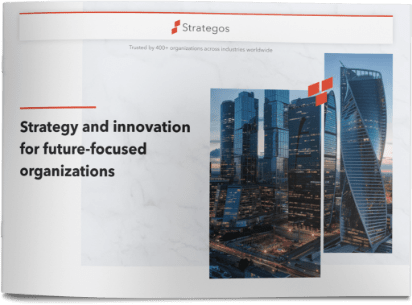Most of the time when we think about innovation, we think about launching new products, new services, new routes to market and new business models. But in fact, the application of innovation principles and methods inside a firm can often yield significant benefits in terms of how effectively we organize and serve our customers. How can we focus innovation inside or make functions simpler and more efficient? How can we achieve a step change in productivity (and radically reduce costs)?
Internal process re-design was once the domain of “business re-engineering.” But tackling process improvement and re-design from the point of view of innovation can yield new insights and new operational principles that re-engineering leaves behind. We have applied innovation thinking to a range of process within companies from information management to packaging – with the goal of radically simplifying those processes. Let’s see how this works.
1. Work from the future back
The innovative approach is not about detailing your current process and identifying point solutions. It’s about truly understanding what a process needs to accomplish (what is the Job to Be Done?) and setting aspirational goals for accomplishing these needs. Can we do it in half the time? Do we need to do it at all? It’s all about imaging a new future state for the process or function and designing the path to get there. It is NOT about incrementally moving forward from the existing process.
2. Bring new perspectives to the problem
We generally focus on three lenses: orthodoxies, analogues, and stakeholder insights:
Orthodoxies: Ask yourself WHY you are doing things the way you are. Not just because “it’s always been done that way” – dig deeper. What are the beliefs on which this process or process step is based? Are those beliefs still valid? Or has technology or cost structures invalidated these beliefs over time? Once the orthodoxies are identified – challenge them. How can we overturn this orthodoxy in a way that provides a simpler process?
Analogues: Are there other companies that have solved similar problems? FedEx, for example uses an efficient logistics model to ship and track packages. At the level of principle, how could you apply principles of logistics management to your workflows? FedEx is built on a principle of transparency – information on package location and status is universally available (even to the end customer). How could transparency make your process or workflow more efficient?
Stakeholder Insights: Map out the stakeholders of your process – those with a vested interest in the inputs or outcomes. What is the specific job that each of these stakeholders is trying to get done with respect to the process? What is standing in their way of getting this done? What “work-arounds” have they put in place? What causes them unnecessary frustration? Understanding the process from the stakeholder’s point of view and designing new ways to help them “get their job done” as efficiently and painlessly as possible is a good start to building a simplified process.
3. Diverge before you converge
Challenging orthodoxies, extracting lessons from analogues, and understanding stakeholder frustrations will give you lots of specific ideas to improve your process. Look at these different sets of insights in combination: How can we apply Company X’s approach to the problem, in a way that addresses our stakeholders’ frustrations?
Once you have assembled a large list of point solutions, stand back and look for themes. Do these themes imply some new principles that should serve as the foundation for our new, simplified process? Identify these themes or principles and use them to redesign the process.
A “watch-out”
It is often hard for people working within a process to “get above” the day-to-day and examine and question the process at the level of principle. They often know best how to implement point-solutions that make their specific segment of the process more efficient. Try to get people to think more holistically about the entire end to end process through example. Take one of your analogues, describe it thoroughly, and ask people to identify the 2-4 underlying principle on which it is based. Hopefully, this exercise will help them to apply the same strategic thinking to their process.
The innovative approach to process simplification is NOT about simply “working harder” or incrementally tuning existing processes. It is about re-designing the work from the level of principle, using new insight – to free under-leveraged resources and assets to capture cost management and productivity opportunities





